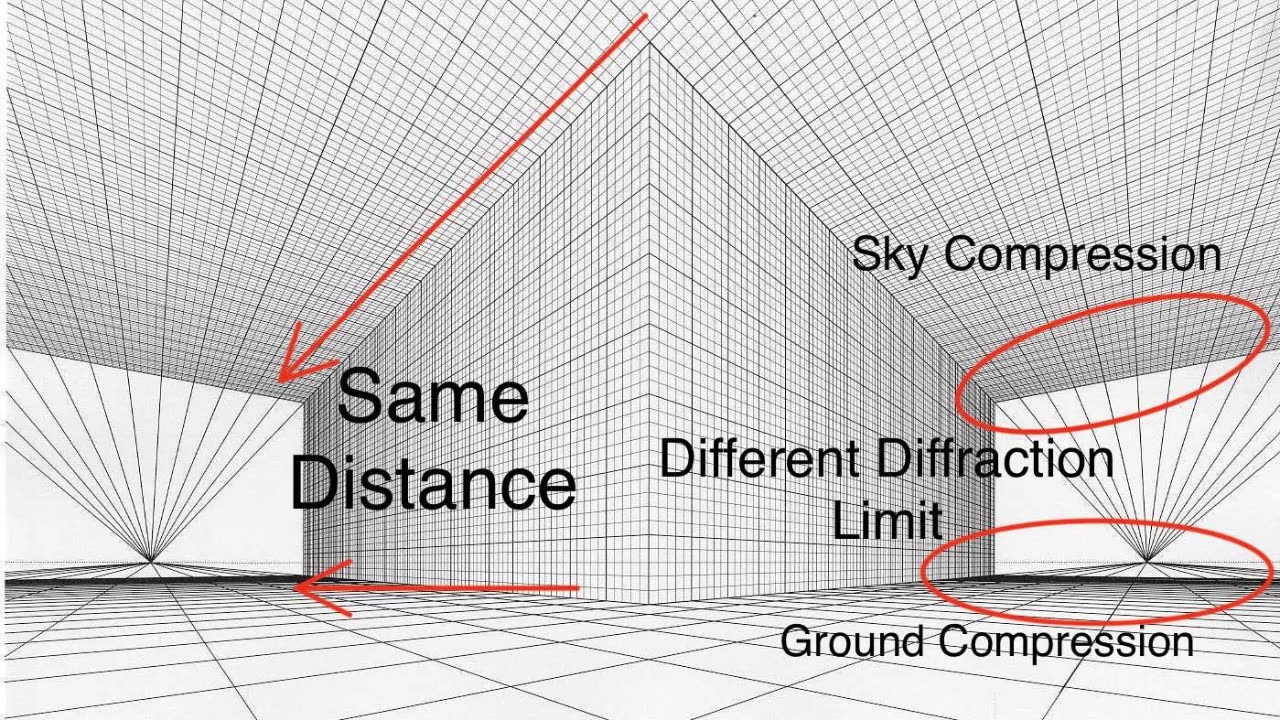Premium Only Content

If the Earth was flat, How could the Sun set?
If the Earth was flat, How could the Sun set?
The Sun never sets.... it only moves far enough away to become unresolvable, and eventually takes its daylight with it.
Perspective, observer height, the diffraction limit, the attenuation of light, and angular resolution limit all contribute to the visual phenomenon of objects appearing to disappear bottom-up at a distance.
The eye's resolution angle, which is the minimum angle at which two points can be distinguished as separate, also plays a crucial role in the perception of objects at a distance. An example involving two equal-sized balls at a given distance [pictured below], one above the observer's line of sight appears smaller as it moves away, while the one below appears larger. They also illustrate that there is a specific angle at which objects disappear from sight, referred to as Θ (theta), and this angle is reached sooner for objects below the eye line.
Keep in mind that for the object to disappear entirely, or become completely unresolvable, theta must be diminished to zero both above and below.
The images below illustrate how angles of sight compress or expand based on the observer's height and how objects of different heights are perceived by the human eye. They convey that as an observer lowers their height, the angles close to the ground compress, making the horizon appear closer. Changing the observer's height affects the angles of sight, compressing them more at the bottom (ground level) than at the top (sky level). This alteration results in a change in how information is visually processed and how far one can see. Conversely, the angles above expand. An object traveling at a higher altitude would show little change in angular size before it sets into the lower horizon. Although the total number of potential angles of vision above and below the eye line is the same, the compression rate of these angles differs. This variance in compression affects how objects are visually perceived as they move away from the observer.
Objects can seem to disappear or "set" into the horizon or other larger objects (like buildings) when viewed from certain angles. When one looks up at a very steep angle, the floors towards the top of a building compress visually, making it harder to discern details or even see the highest floors. This compression of angles leads to a loss of information and contributes to the "disappearance" of objects that are not actually obscured by any physical barriers. Also, there are of course atmospheric conditions such as aberrations and refraction that can alter the perceived size and shape of distant objects.
The higher the ceiling, the steeper the angular compression, and the faster the descent rate to the vanishing line.
This is EXACTLY how the sun and moon appear to set, maintaining a relatively constant size due to their high upper boundary and short travel distance within the observer's perspective before they meet the horizon line.
Taller objects, those exte
-
 54:25
54:25
Anti-Disinfo League
1 month agoA Brief History On Voigt Transformations
362 -
 3:56:47
3:56:47
Shield_PR_Gaming
4 hours ago10/18/25 | WARNING!!! 18+ Battlefield 6 Dev Dogtags?
10.2K1 -
 LIVE
LIVE
Lofi Girl
2 years agoSynthwave Radio 🌌 - beats to chill/game to
117 watching -
 LIVE
LIVE
SilverFox
16 hours ago🔴LIVE - ARC RAIDERS SERVER SLAM TEST! DAY 2!
107 watching -
 2:03:11
2:03:11
LFA TV
18 hours agoTHE RUMBLE RUNDOWN LIVE @9AM EST
125K14 -
 LIVE
LIVE
MrR4ger
4 hours agoWERE NOT GAY, WE JUST PLAY ARC RAIDERS W/ TONYGAMING AND AKAGUMO
34 watching -
 3:25:10
3:25:10
Retro Rewind Pod
14 hours ago $0.04 earned📺🌄 SATURCADE ADVENTURES is back! Saturday Morning Cartoon Feels and Gaming Fun
2.74K -
 43:57
43:57
Daniel Davis Deep Dive
5 hours agoDeep Dive Intel Briefing /Lt Col Daniel Davis
14.5K6 -
 LIVE
LIVE
blackfox87
6 hours ago🟢 SUBATHON DAY 16 | Premium Creator | #DisabledVeteran
108 watching -
 1:10:13
1:10:13
Wendy Bell Radio
8 hours agoPet Talk With The Pet Doc
26.9K20